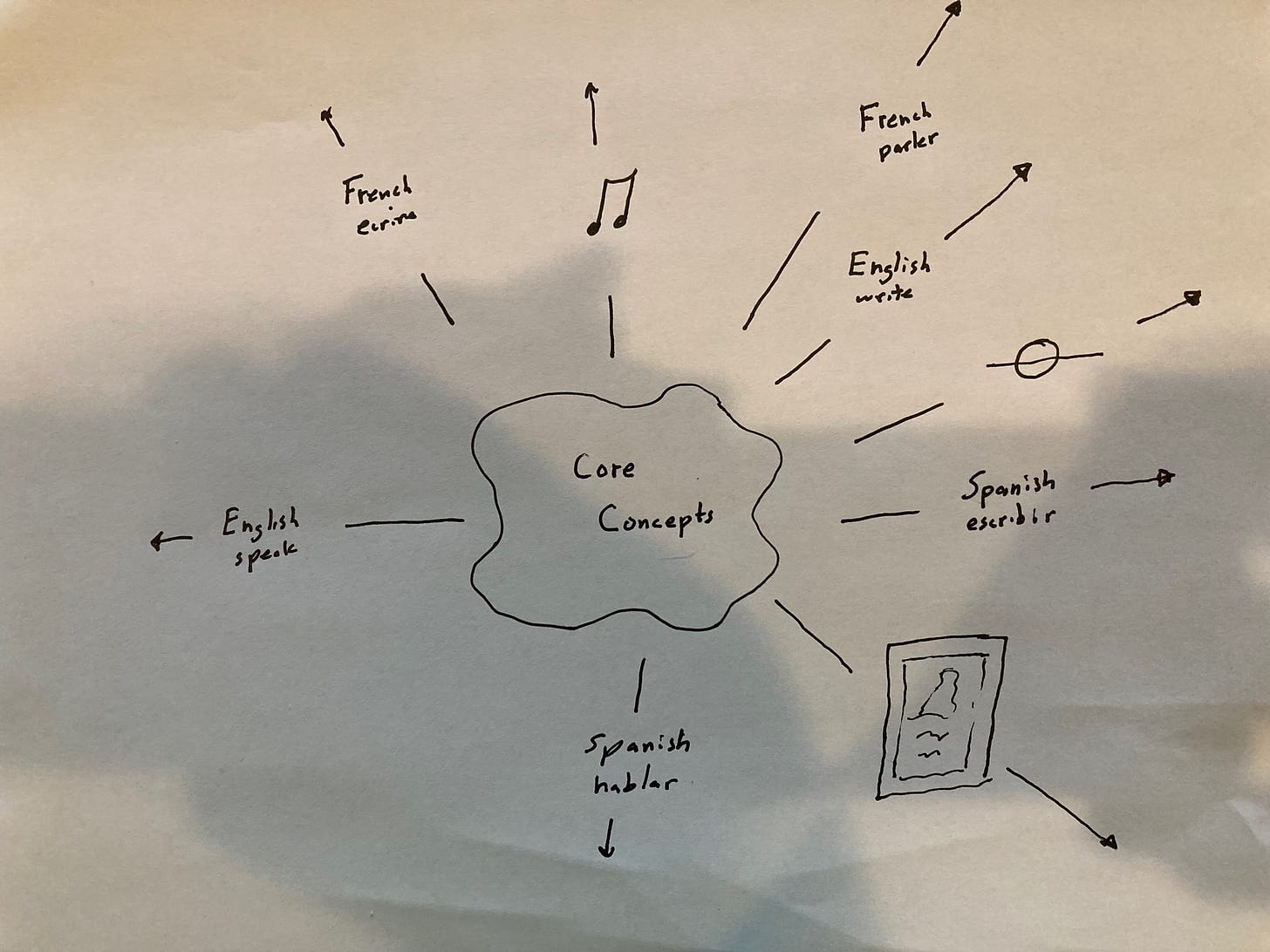I have always been fascinated by languages (including programming languages). There are a lot of people that have the general feeling that it is “just” a matter of different words, different spellings, perhaps even a different alphabet. Or — for speech — different sounds and combinations that make a different language go together. Certainly the ways that we interact with languages — through the eyes, the ears, through the fingers and touch — are all a part of the distinctiveness of language. And, please, don’t let us forget the languages of art — of music, of sculpture, painting and drawing, photography, weaving, folk art, and all.
But that is still on the surface. I have delved into more than a half-dozen languages in my life (more than a couple of dozen if you count programming languages), but I cannot claim fluency in any except English. For a single language, English is certainly sufficiently challenging — primarily because English is an absorbing language. If you don’t have a word in English to describe something and another language does have such a word — take it into English and make it part of the language (no promises that pronunciation or spelling will remain intact).
This is a different approach from that of many languages. German puts two, or more, word building blocks together to expand their language. French monitors general use constantly to maintain an illusion of control over what will be considered to be part of French. Every colonial, or fought-over, region has had the invading language forced upon the people of the region, either blending languages or creating an effectively new “trade” or local dialect.
I have talked about “if you don’t have a word for something, take it from another language”. Okay. That is what is DONE — but what does that mean?
Languages are used for communication within a community. Everyday actions and ideas must be able to be expressed. People that live in a desert region will have a different environment affecting their language from those who live in a rainforest. It is also a reflection of the internal community. The peoples who have lived in the Russian region have been long dominated by centralized, authoritarian (and often stratified — layers of “nobility” or privilege) government and bureaucratic structures. The general people have no feeling of control so they don’t DO anything — everything is DONE TO them. In language, this is called a “passive” voice and the Russian language is built upon passivity. It also works both directions — passive in response to the environment and passive in actions because of less of a foundation of thought for active structures.
People who have vocations, or jobs, as translators are required to pass beyond the point of word-for-word translation. Dictionary word substitutions only get oneself a small way toward expressing oneself in a different language. Professional translators have to absorb the reality that GROUPS of words, in specific CONTEXTS, have particular meanings.
In all these cases (and more to think about and explore), we have communication between our inner selves and the outside world. Words, lyrics, paintings, are all approximations to expressing ourselves to the outside world and hoping that others will understand what is being expressed. There is a central core concept that is sometimes best expressed in writing and sometimes expressed in song. And, if done in both, they complement one another — both offering more perspectives on an inner reality.
In the case of translation, the listening to a language brings one close to the central core concepts that are desired to be expressed. The translator then expresses that in a different language. In many ways, artists are translators attempting to bring those core concepts to life and to others’ interpretations as much as possible. The process of translation is the process of “grokking” (deep understanding — read “Stranger In a Strange Land”) the core concepts and expressing them into the same or a different language.
Can English be translated into English? Absolutely. There are the easy cases of translating a period dialect (“Old English” to modern English) and the more pervasive, and less blatant, act of the creator getting in touch (in whatever manner) with a core concept and then expressing it in their mother tongue. Some languages are best suited for concrete actions, situations, and activities. Such languages (for example, English, Quechua, or Swahili) express doing and existing and interactions (“I read a book today”). Other languages are better suited for emotions — such as the various artistic languages. These are not isolated from one another — prose can express emotion and painting can demonstrate actions, events, and interactions. “A drawing is worth a thousand words.” Is this a saying about the acts of translation?
Although greatly interested, I have had very little professional experience with natural language processing as done via computational power. However, I would guess that the levels operate in much the same way. Words can translate via online dictionaries. Sentences require a gestalt of the complete thought. And essays require knowledge of history and context. Doing such, we are progressing to the central core concepts. Once obtained to the best of one’s current ability, it is possible to then express those concepts in other languages.


No comments:
Post a Comment